Types of Game Animals Identification
Black Bear
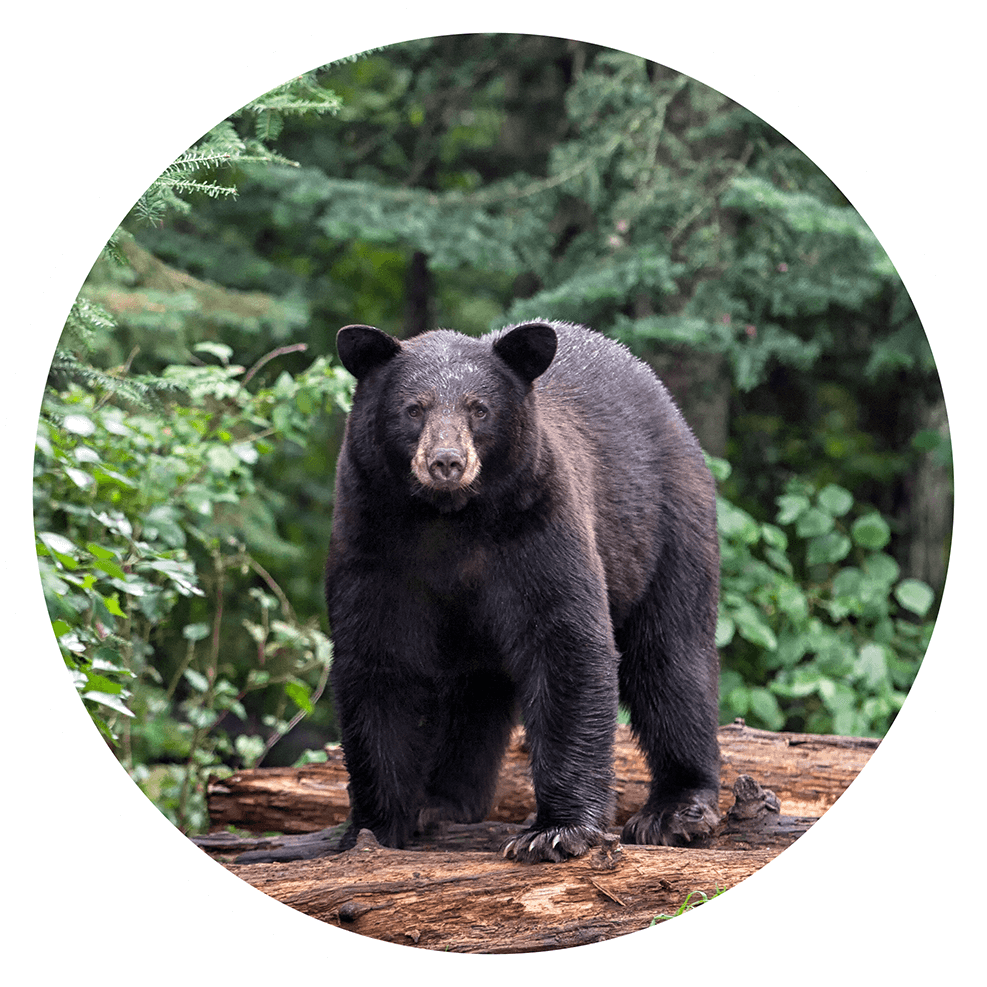
Bears are flat-footed with five curved, non-retractable claws on each paw.
Average weights for most adult bears ranges from 90 to 300 pounds.
White Tail Deer
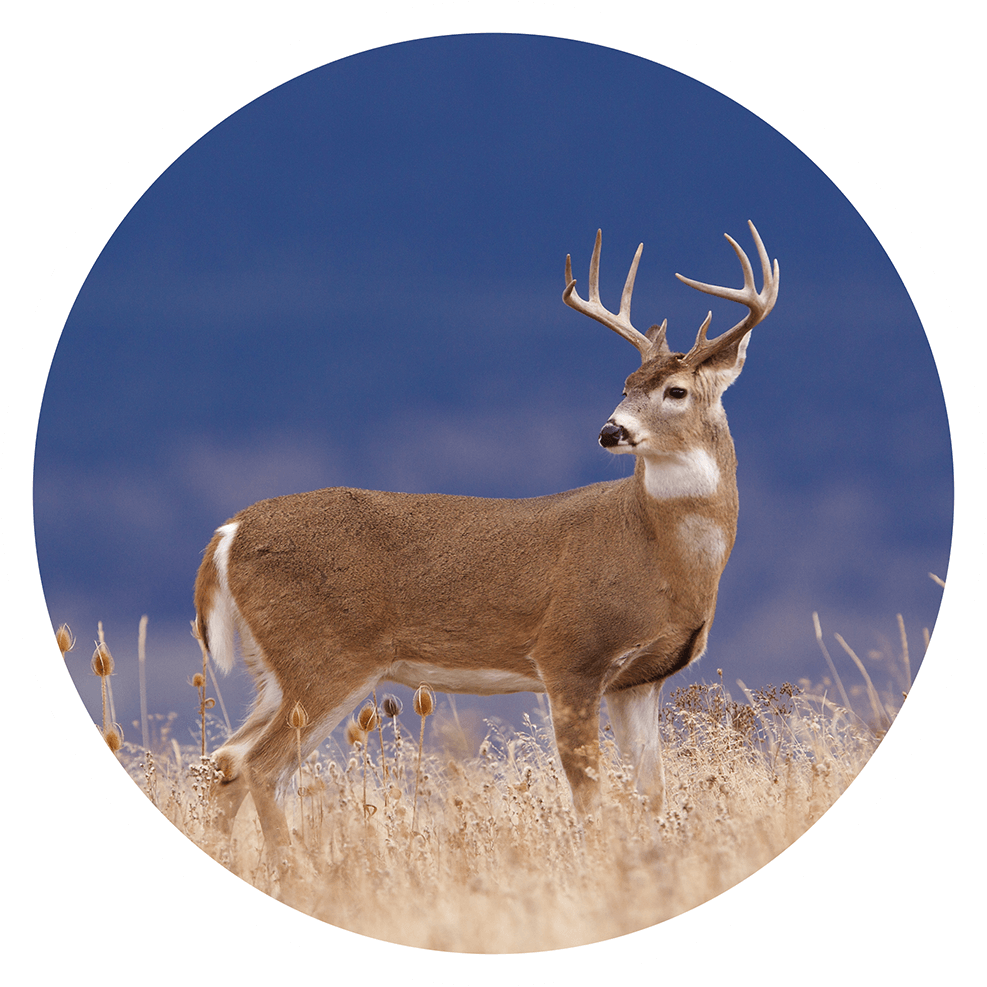
The large white tail that is held erect and flicks from side to side when the animal runs is the best identification feature for this species.
A buck's antlers consist of a heavy, forward curving main beam, from which individual tines project upward. Antler development is influenced by age, quality of diet, and genetics.
Mule Deer

The mule deer, so-named because of its large gray ears, is bigger than a white-tailed deer. Average weight of adult mule deer varies from 150 to 300 pounds.
The white rump patch is always visible and the black-tipped tail is not held erect like a white-tailed deer.
Gray Squirrel
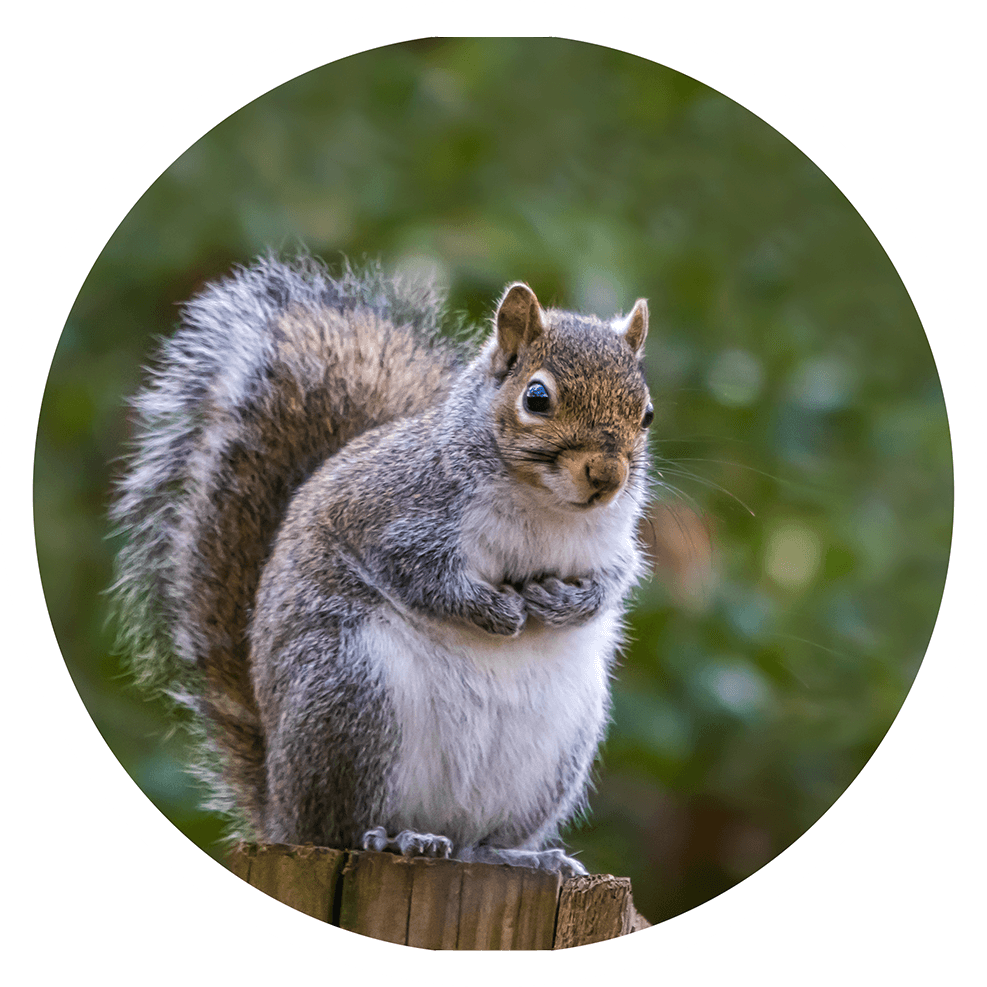
Typical gray squirrels have grayish upper parts with a white belly, throat, and inner surfaces of the extremities. The tail is banded with brown and black and always has white tips.
Prime natural habitat is big, relatively unbroken tracts of mature hardwood forests. However, they are often found in city parks and other artificial habitats.
Fox Squirrel
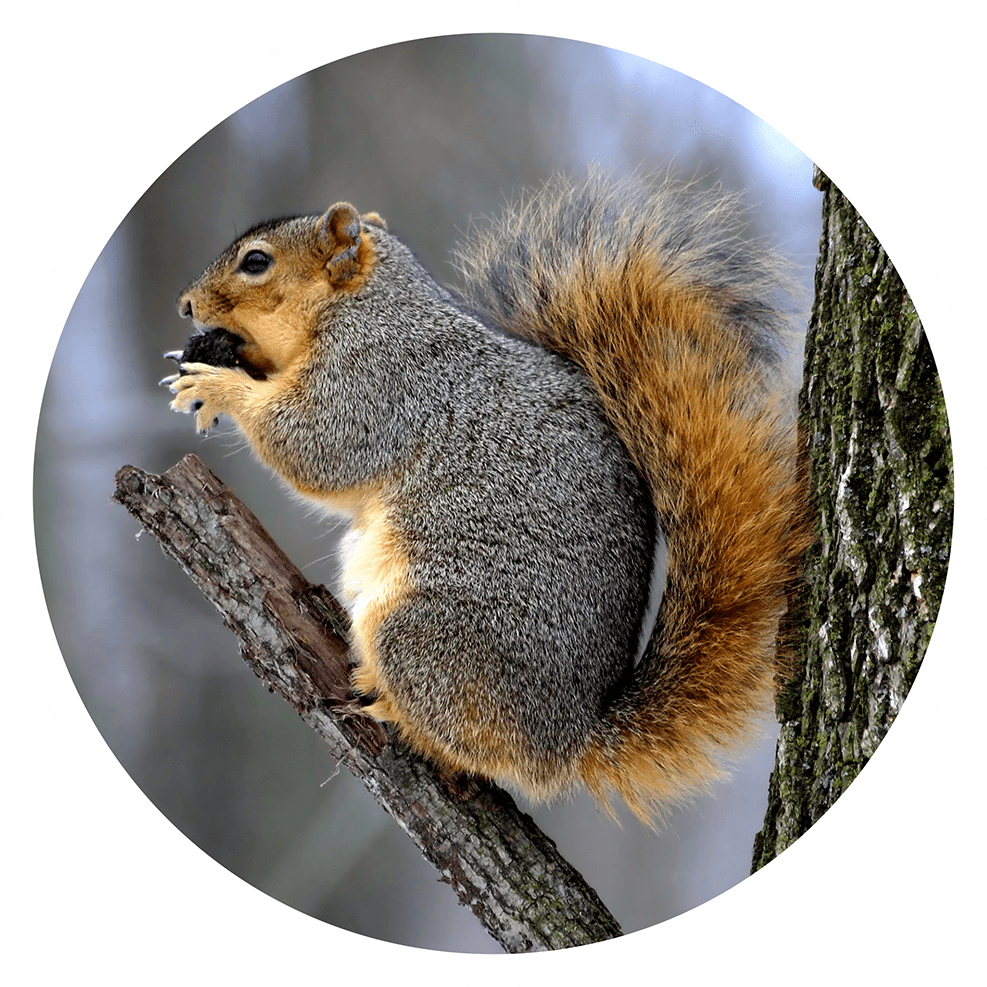
Throughout North America, the fox squirrel has coloration patterns that vary from all black to silver gray with a white belly or grizzled rusty brown above with an orange belly.
Average weights of adult fox squirrels vary from 1.5 to 2.7 pounds.
Cottontail

Coloration of cottontails varies depending on the species; however, all cottontails have relatively large ears and feet.
Cottontails are widely distributed throughout the United States and extreme southern Canada. The Eastern Cottontail is the most widely distributed of the 8 species of cottontails.
Furbearers
Raccoon
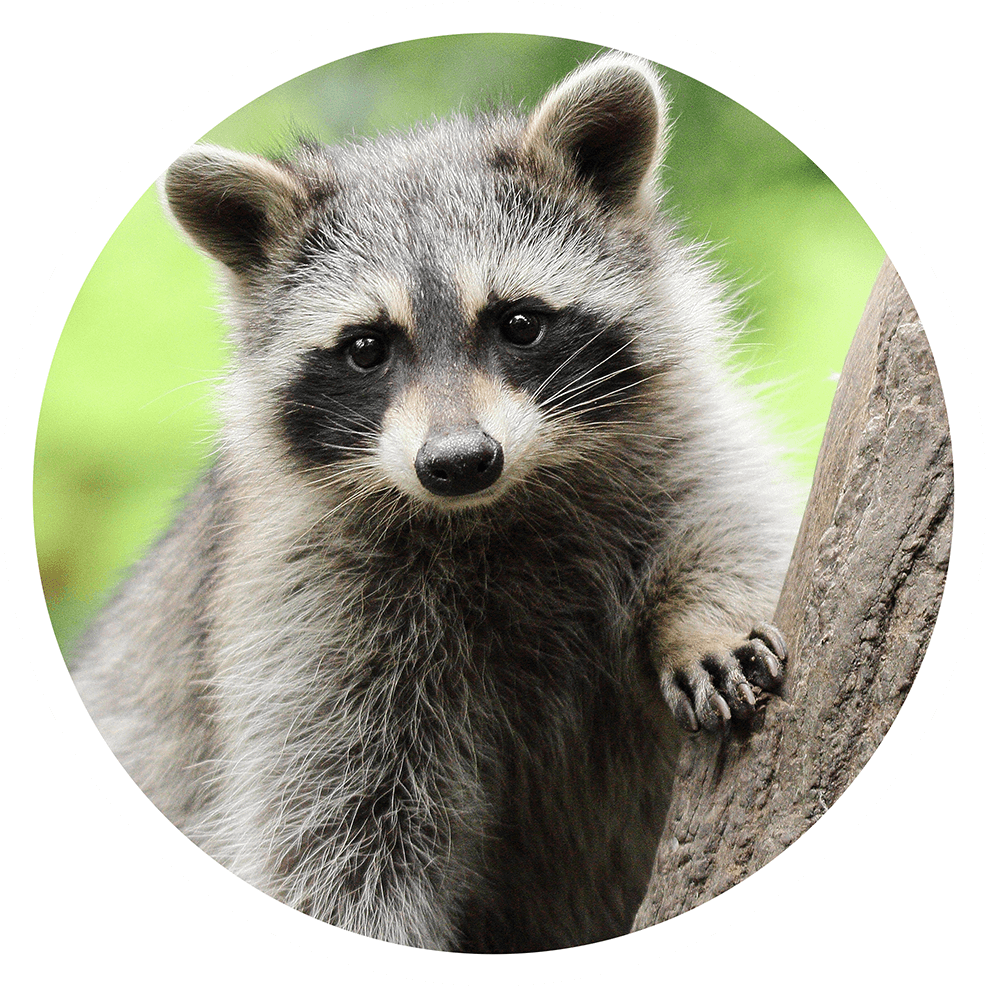
A raccoon is easily recognized by its black mask on a whitish face and the four to seven dark rings on the tail. They are generally gray and black above and paler below. The body color is dependent on the number of black and white tipped guard hairs.
Throughout their range, raccoons are found almost everywhere that water is available.
Striped Skunk
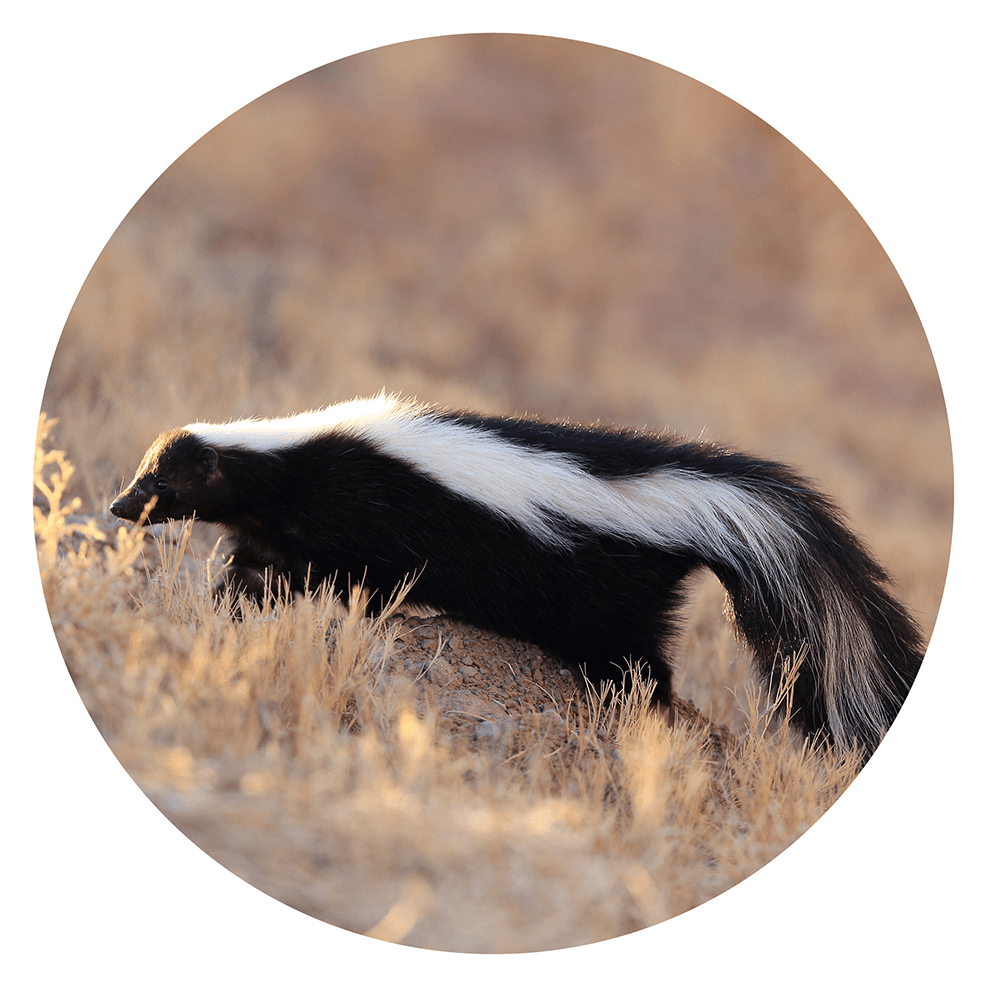
Skunks are typically black in color with two broad white stripes on their backs that meet in a cap on the head and shoulders.
Normally about the size of a house cat, the skunk has a small triangular shaped head with small, rounded ears.
Spotted Skunk
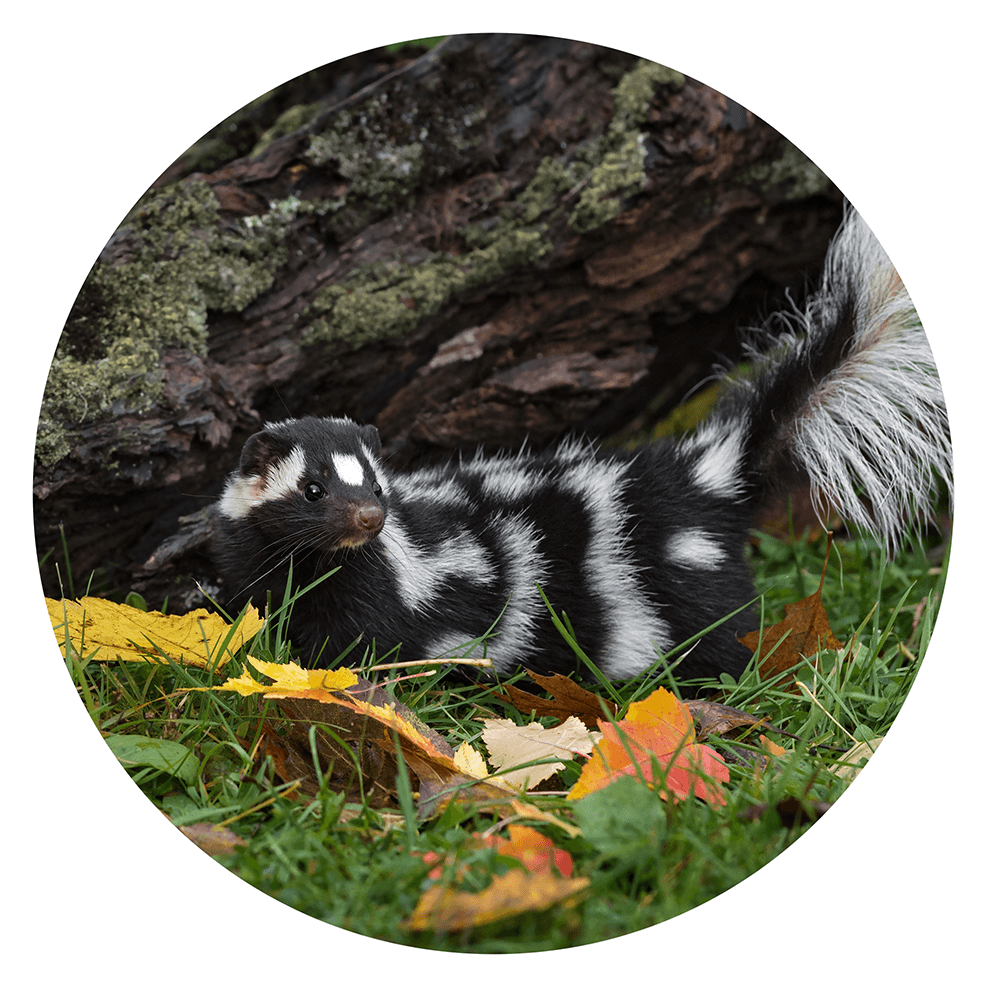
More carnivorous than other skunks, the spotted skunk feeds primarily on small mammals.
Spotted skunks are black with irregular horizontal white stripes and elongated spots on their sides.
Long-Tailed Weasel

These small terrestrial carnivores have long slender bodies that allows them to enter the hiding places of their main food source: rodents.
They have brown upper body parts with white bellies. The weasel's tail is brown with a black tip.
Opossum

The first toe (thumb) of the opossum's hindfoot is opposable (thumb-like).
The opossum has a grayish color pattern with a long, scaly nearly naked tail, and large black ears with pinkish tips.
Mink

The mink has a long, slender body that is generally dark chestnut brown in color with the exception of a few spots on the chin, throat, chest, and abdomen.
Coat is soft with a thick underfur and is quite valuable for use in the fur coat industry.
Cougar
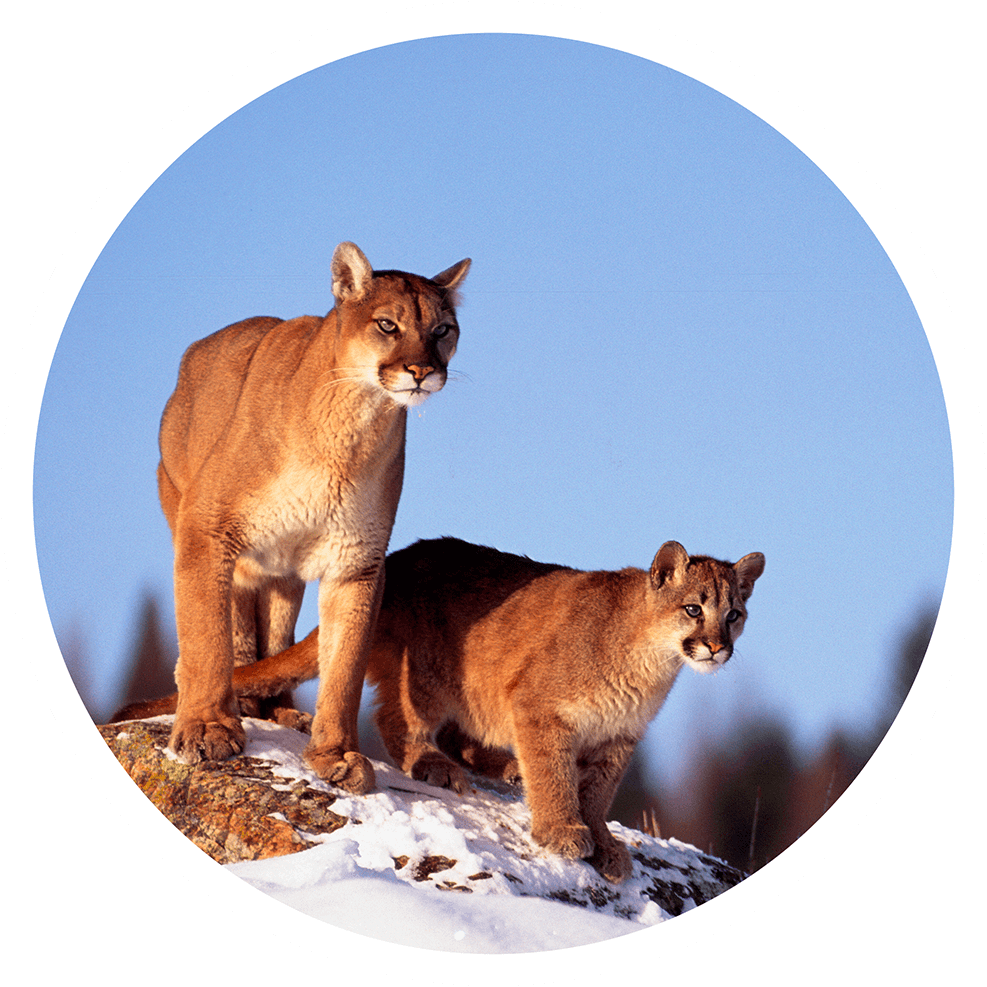
A large tawny to grayish cat, the cougar has dark brown on the tip of its long tail and on the back of its ears and side of its nose.
Average weights of adult cougars vary from 70 to 200 pounds.
Gray Fox
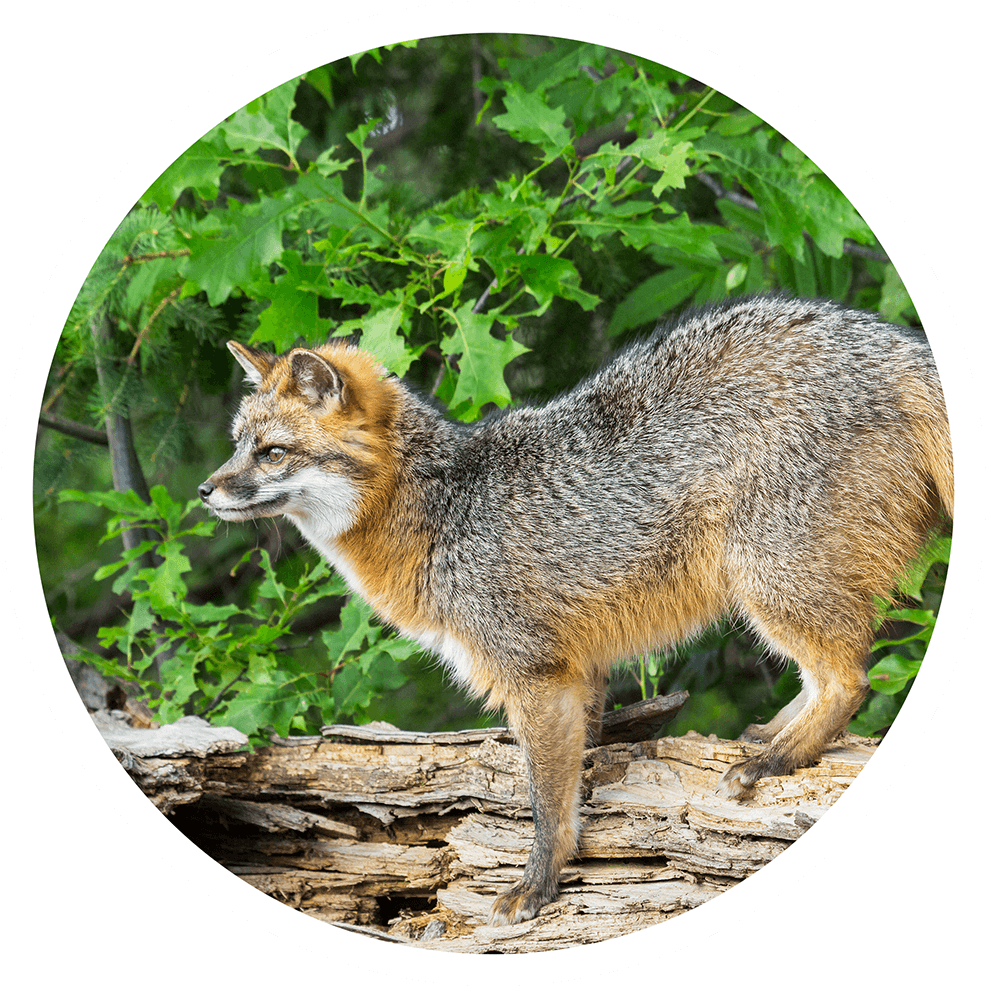
Uniquely different from red foxes, gray foxes can climb trees.
Slightly smaller than red foxes, they have a salt and pepper upper body with reddish flanks and back of head. The underside is typically white. The tail typically has a black median stripe and a black tip.
Red Fox
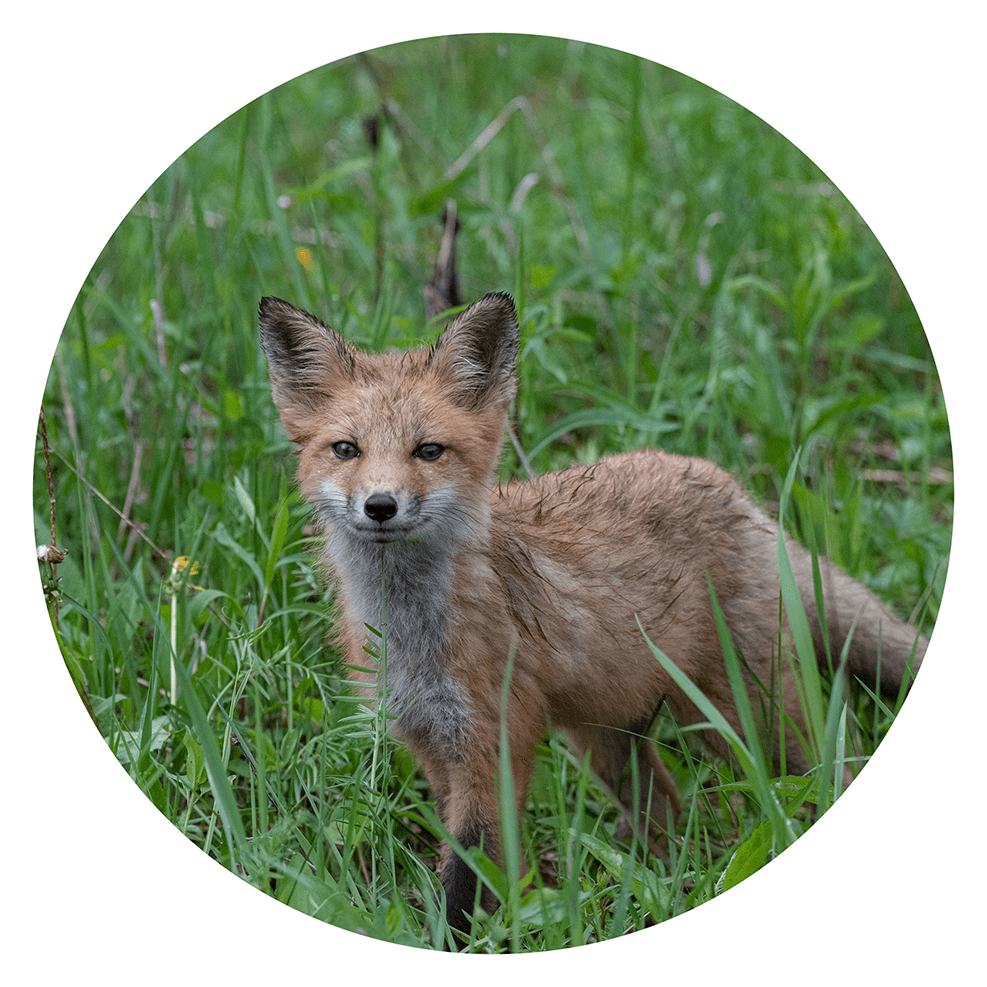
The red fox is reddish yellow, darkest on the shoulders and back, with a bushy white-tipped tail. Its moderately long legs have black stockings and the belly and chin are white.
Other foxes lack the conspicuously white-tipped tail.
River Otter
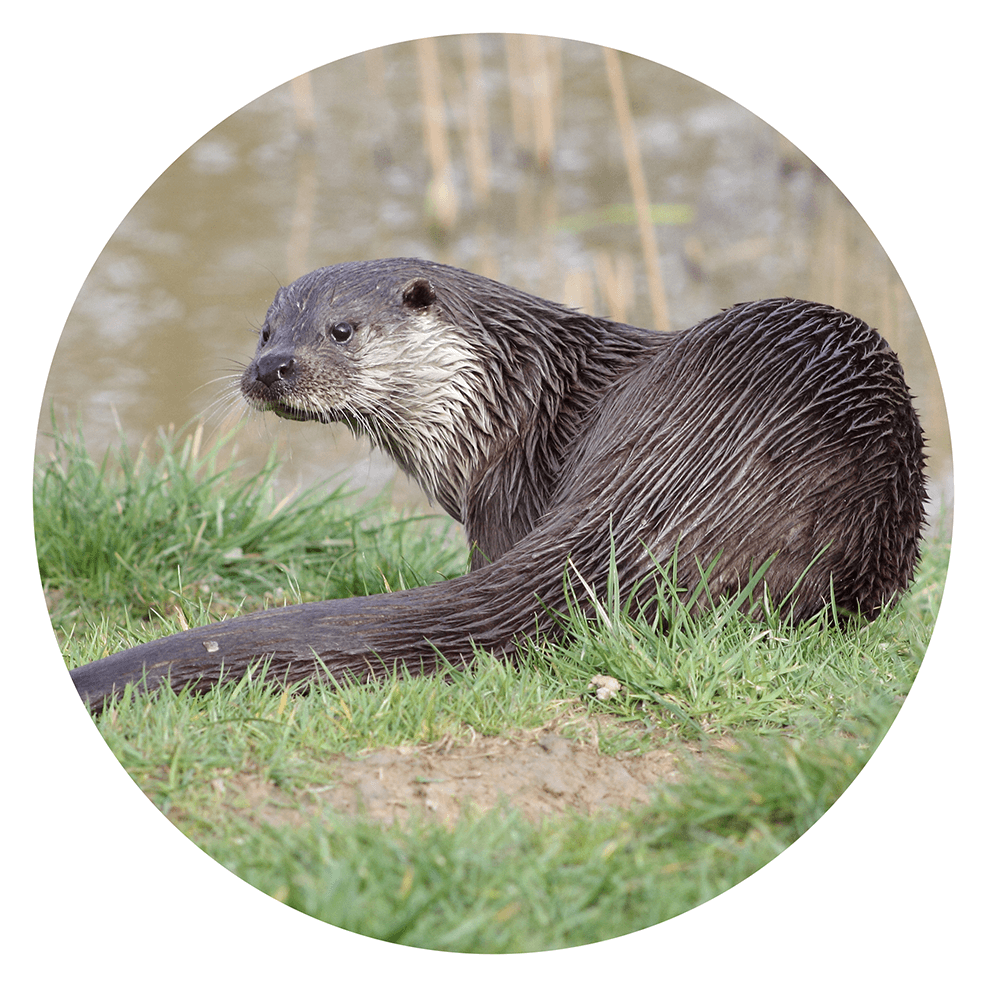
The otter has webbed feet, prominent whiskers, and an elongated tail that is thick at the base and tapers to a point.
It feeds primarily on fish but also eats small mammals such as mice and terrestrial invertebrates.
Beaver

Beavers have short, heavily clawed front feet that facilitate digging. The largest rodent in North America. Most distinguishing feature is the horizontally flattened, paddle-like tail. Similar species to the beaver include the smaller nutria and muskrat. Both of these species have slender tails.
Beaver dams and associated wetlands created by beavers increase habitat diversity that is beneficial for many wildlife species. However, these positive habitat modifications often negatively impact economics because of the damage of trees, roadways, culverts, and the cost of repairing the damage.
Muskrat

Muskrats are usually dark brown above with a pale to nearly white belly.
Much smaller than beavers, they have a tail that is scaly, sparsely haired, and laterally flattened.